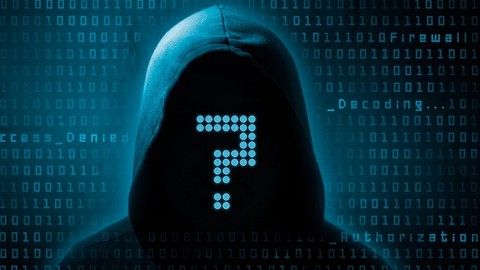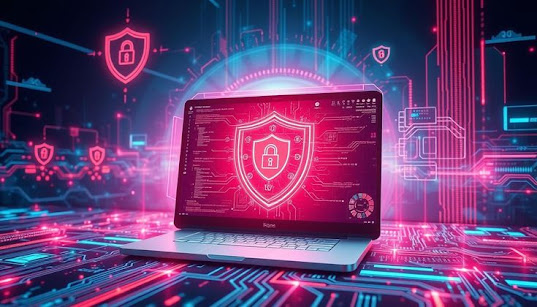Top Cybersecurity Trends in 2025 You Need to Watch
Top Cybersecurity Trends in 2025 You Need to Watch
Cybersecurity in 2025 is no longer a narrow technical concern—it is a critical foundation for global economies, digital trust, and national security. As the digital landscape continues to expand and evolve, so do the tactics of cybercriminals, state-sponsored threat actors, and opportunistic hackers. Organizations and individuals alike must adapt to a complex web of evolving risks, changing regulations, and fast-moving technologies. The good news is that cybersecurity defenses are also getting smarter, more automated, and increasingly proactive. But to stay ahead, it’s essential to understand what the most important cybersecurity trends are this year—and how they’re shaping the future of digital protection.
One of the most defining shifts in 2025 is the mainstream adoption of Artificial Intelligence in both cybersecurity offense and defense. AI is now a core component of modern cybersecurity operations. It powers threat detection engines, predictive analytics, automated incident response systems, and even deep behavioral analysis. With the growth of generative AI, cybercriminals are now launching hyper-targeted, AI-generated phishing campaigns, voice cloning attacks, and malware that evolves with every scan. At the same time, defenders are leveraging AI to detect anomalies faster, triage threats more accurately, and stop zero-day exploits before they can spread. This has led to a battlefield where machine is fighting machine—raising both the stakes and the speed of attacks.
Another crucial trend in 2025 is the evolution of ransomware into more sophisticated and persistent threats. Ransomware attacks are no longer smash-and-grab operations. They are now carefully planned campaigns that involve multiple stages of infiltration, lateral movement, data exfiltration, and finally, encryption and extortion. Double and even triple extortion tactics—where attackers threaten to leak data, notify regulators, and disrupt systems—are becoming common. Some ransomware groups are now using AI to automatically identify high-value targets inside an organization before launching encryption. This means companies must build not only stronger defenses but also faster recovery strategies, such as immutable backups, segmented networks, and zero-trust access controls.
Zero Trust Architecture (ZTA) has become the gold standard in network security design. In 2025, organizations are moving away from perimeter-based security models and toward ZTA, where every access request is verified, regardless of origin. This approach assumes that no device, user, or system can be trusted by default. With remote work, hybrid environments, and BYOD policies becoming the norm, Zero Trust helps reduce internal attack surfaces and enforce tighter control over who gets access to what resources. Identity is the new firewall, and continuous authentication, least privilege access, and context-aware authorization are now vital tools in enterprise security.
In parallel, post-quantum cryptography (PQC) is rapidly gaining traction. With advancements in quantum computing inching closer to breaking traditional encryption algorithms, governments and enterprises are preparing for a future where current cryptographic standards are obsolete. In 2025, organizations are beginning to migrate toward quantum-resistant algorithms, which are being standardized by global entities like NIST. While we may still be years away from a quantum computer capable of breaking RSA or ECC, the urgency lies in the fact that today’s encrypted data can be stolen now and decrypted later. This “harvest now, decrypt later” strategy has made PQC a non-optional consideration for companies in finance, healthcare, defense, and critical infrastructure.
Cloud security continues to dominate discussions as organizations increasingly rely on multi-cloud and hybrid environments. The challenge in 2025 is not just securing cloud workloads, but also managing complexity across different cloud providers, services, and access policies. Misconfigurations remain a top cause of data breaches, often due to a lack of visibility or unified controls. Cloud-native security tools, like cloud security posture management (CSPM) and workload protection platforms (CWPP), are now critical to reducing cloud risk. Meanwhile, security teams are focusing more on secure-by-design principles, embedding security into the development pipeline through DevSecOps practices.
Human factor risks are also evolving. While technical controls are essential, social engineering remains one of the easiest and most effective ways for attackers to breach organizations. In 2025, phishing emails are no longer riddled with typos and poor grammar. Instead, generative AI enables the creation of flawless, customized spear-phishing messages that appear entirely legitimate. Deepfake videos and synthetic voice calls are being used in business email compromise (BEC) attacks that are incredibly difficult to detect. This makes security awareness training more important than ever—especially programs that include simulated phishing, behavioral reinforcement, and real-time coaching.
On the regulatory front, global cybersecurity laws are becoming more harmonized, but also more demanding. New data privacy laws, mandatory breach disclosures, and critical infrastructure protection mandates are shaping the way organizations handle cybersecurity. Governments are now requiring companies to implement minimum security standards, conduct regular risk assessments, and report cyber incidents within 24–72 hours. In 2025, compliance is not just a checkbox—it’s a strategic imperative. Cyber insurance providers are also tightening eligibility, requiring detailed evidence of cybersecurity hygiene before issuing or renewing policies.
Operational Technology (OT) and Internet of Things (IoT) security is under the microscope as smart factories, connected vehicles, and critical infrastructure become more digitized. OT environments, historically isolated, are now increasingly connected to IT networks—introducing risks that traditional IT security tools weren’t designed to handle. Attackers are exploiting vulnerabilities in industrial control systems (ICS), medical devices, and even home appliances to gain entry into corporate networks. In 2025, segmenting OT from IT, using secure gateways, and applying endpoint protection on non-traditional devices is no longer optional—it’s essential.
The rise of Cybersecurity-as-a-Service (CaaS) is another major shift. With a shortage of skilled professionals and the complexity of managing 24/7 operations, many companies are turning to managed security service providers (MSSPs) and CaaS platforms. These services offer advanced protection—such as threat hunting, security monitoring, and incident response—on a subscription basis. Small and medium-sized enterprises (SMEs), in particular, benefit from access to tools and talent that would otherwise be cost-prohibitive. CaaS is democratizing cybersecurity, enabling more organizations to adopt strong defenses without building everything in-house.
As cybersecurity becomes more automated, ethical AI and algorithm transparency have emerged as top priorities. In 2025, black-box models are being scrutinized for bias, false positives, and lack of accountability. Security teams are under pressure to ensure their AI systems are explainable, auditable, and privacy-compliant. This has led to the growth of explainable AI (XAI) frameworks, which help analysts understand why an alert was triggered and how an AI system made a decision. This transparency is vital in regulated industries, where audit trails and governance controls are mandatory.
A trend gaining momentum is the focus on cyber resilience rather than just protection. Organizations are shifting from a “prevent everything” mindset to one that acknowledges breaches are inevitable. The goal in 2025 is to minimize impact, speed up response, and recover operations quickly. Business continuity planning, disaster recovery drills, tabletop exercises, and attack simulations are now integral parts of the cybersecurity strategy. Metrics like mean time to detect (MTTD) and mean time to recover (MTTR) are being prioritized over traditional firewall coverage or antivirus deployments.
Another critical change is the growing role of security culture within organizations. CISOs are focusing not just on technology, but also on aligning security with business goals and embedding it into the corporate DNA. Boards and executives are being educated on cyber risks, and security is being discussed as part of enterprise risk management. In 2025, organizations that succeed in cybersecurity are those that treat it as a strategic function, not just an IT cost center. This includes fostering collaboration between IT, legal, compliance, HR, and even marketing—since a cyber breach affects every corner of the business.
Finally, cybersecurity for AI models themselves is becoming a growing concern. As more companies deploy AI-driven applications, those models become high-value targets. Attackers are now trying to poison training data, reverse-engineer proprietary models, or extract intellectual property from inference APIs. In response, organizations are developing AI security best practices—such as watermarking, adversarial testing, and model access controls—to protect their algorithms from being manipulated or stolen.
In conclusion, the cybersecurity landscape of 2025 is fast-moving, multifaceted, and high-stakes. The convergence of AI, cloud, quantum computing, IoT, and hybrid work has created both incredible opportunities and dangerous vulnerabilities. To thrive in this environment, organizations must adopt a proactive, adaptive, and holistic approach to cybersecurity. This includes embracing AI responsibly, preparing for quantum risks, training employees for modern threats, and embedding security into every layer of the business. Staying ahead of these trends isn’t just a matter of innovation—it’s a matter of survival in the digital era.




Comments
Post a Comment